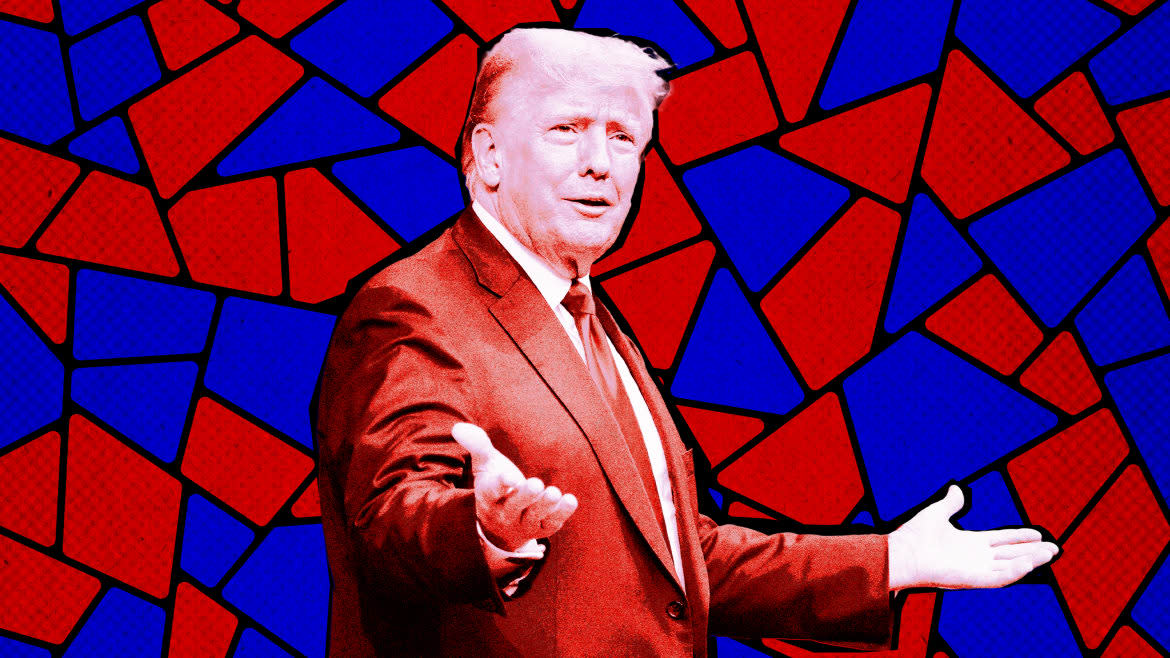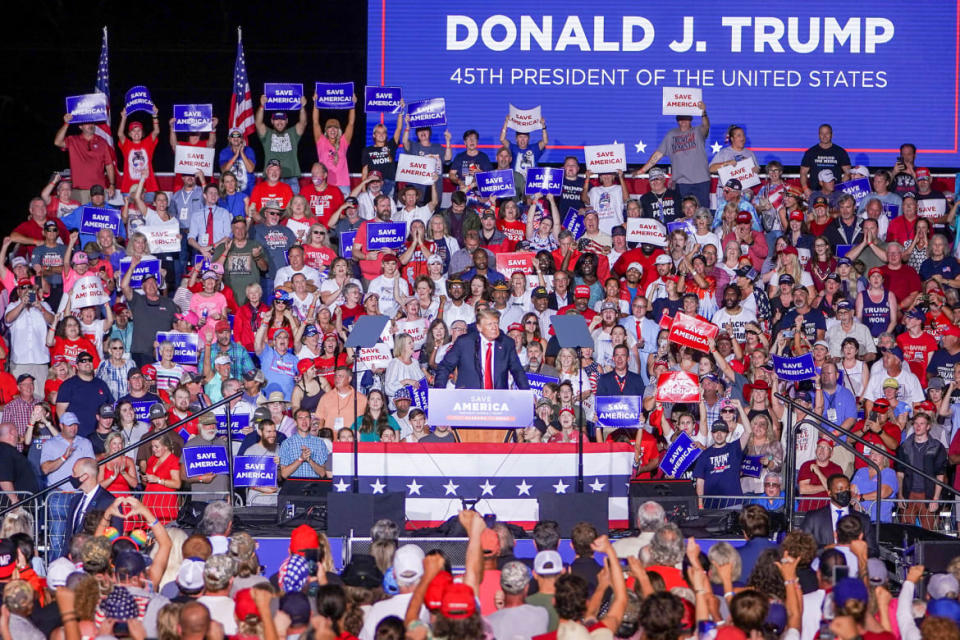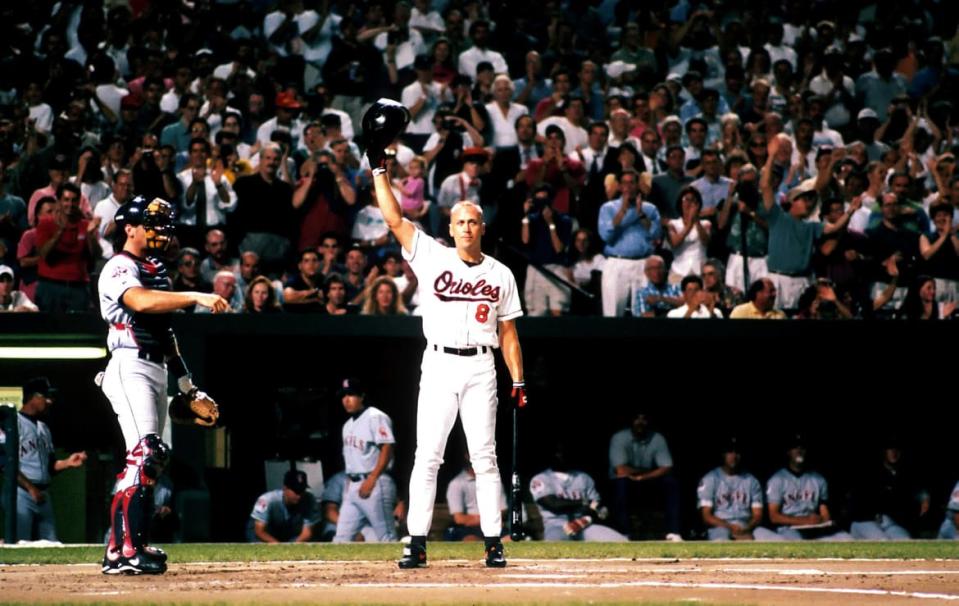Trump Didn’t Cause America’s Bitter Partisanship Alone (But He Made It a Lot Worse)

How is it possible that the more indictments leveled on Donald Trump, the more Republicans flock to him?
This behavior defies logic. Then again, Trump won the election in 2016, despite saying and doing things that would have sunk any “normal” politician. A better question might be this: What happened to America in the 21st century that would make Trump immune to political gravity?
On Thursday, former treasury official Steve Rattner joined MSNBC’s Morning Joe to help answer that question and explain (as co-host Willie Geist put it) Trump’s “seemingly unbreakable support” in the GOP. As usual, he brought some compelling visual data.
How the End of Trump Could Come in Iowa and New Hampshire
Rattner’s first graph depicted social science research that was recently highlighted in The Wall Street Journal. As the Journal noted, “When our group is threatened, we rise to its defense.”
Political “sorting,” the theory goes, explains this phenomenon—which is also related to the rise of tribalism.
In short, our political parties used to be more diverse. Each had urban and rural contingents, each had religious and secular voters, and each had conservative and liberal wings.
When I was growing up in rural Maryland, my district was represented by Rep. Beverly Byron, a conservative Democrat who frequently supported Ronald Reagan’s policies.
Pols like Byron are relics of a bygone era. (Both parties have made it clear that you either get in line or get out!) The parties are also more uniform these days. To put it bluntly, your party is your tribe.
“Today, our partisan identities have come into alignment with the other facets of our identity, which heightens our intolerance of each other even beyond our actual political disagreements,” Johns Hopkins University political scientist Lilliana Mason told the Journal.
Reagan’s Republican Party Wouldn’t Think Twice About Aid to Ukraine
Next, Rattner showed a chart about how education polarization is also part of the equation. According to the data, as recently as the year 2000, Republicans still had the larger percentage of whites with college degrees.
Those numbers began to shift shortly thereafter—and dramatically accelerated with Donald Trump’s arrival on the political scene.

The crowd reacts during former President Donald Trump as he speaks during a rally in Cullman, Alabama, Aug. 21, 2021.
Meanwhile, whites without college degrees were pretty evenly divided between the two major parties.
Rattner’s third chart reflected the “partisan animosity” that one party has for the other.
According to Pew, 62 percent of Republicans currently view Democrats unfavorably, while 54 percent of Democrats feel similarly about Republicans.
This increased animosity (like the other trends cited by Rattner) has only occurred over the last two decades. In the mid-to-late 1990s, only about 10 percent of Republicans viewed Democrats this negatively, while closer to 25 percent of Democrats felt this way about Republicans.
Now, if you’ll indulge me, I’d like to engage in some introspective navel-gazing.
I have always been something of a political junkie, but 1998 was the year I graduated college and got involved in electoral politics. Coincidentally, it was also (according to Rattner’s data) a low point for partisan animosity (among Republicans)—and an era where the Republican Party still led in popularity among college-educated whites.
How much did my coming of age politically at this point in history impact my own temperament and distaste for partisan animosity? How much did the political culture of 1998 reinforce my belief that Dems were worse than Republicans? And how much did this period impact my (naive) assumption that the cranks constituted a fringe/small percentage of the American right?
The Right Needs to Ask: ‘Why Do These Racists Keep Getting Hired by Us?’
At the very least, the data makes me curious.
But I think this phenomenon—a 21st century political culture where Donald Trump is inoculated from reality—grew out of a myriad of events taking place over the last 25 years.

President Bill Clinton speaks alongside Vice President Al Gore and first lady Hillary Clinton after the House of Representatives voted to impeach him on Dec. 19, 1998
Consider the events that occurred after I graduated college in May 1998, including Bill Clinton’s impeachment in December 1998, the 2000 presidential recount, the Sept. 11 terrorist attacks (and the attendant conspiracy theories), the Iraq war, and the 2008 financial meltdown. Or consider the rise of the internet and social media. In 1998, most internet users suffered through dial-up connections and social media didn’t even exist.
Culture is upstream from politics, so it stands to reason that America’s changing entertainment culture that kicked off around the turn of the century might normalize certain behaviors previously considered deal-breakers by even the most loyal partisans.
In discussing his new book, The End of Reality, Jonathan Taplin—director emeritus of the Annenberg Innovation Lab at the University of Southern California—made just this point, telling me: “From The Wire to The Sopranos to Breaking Bad to Mad Men, these are incredibly dark anti-heroes… we watched that for 10 or 15 years. It’s no surprise that we wind up in 2016 saying, ‘Why shouldn’t Tony Soprano be president?’” (It should be noted that The Sopranos debuted in 1999.)

Infielder Cal Ripken Jr. of the Baltimore Orioles tips his batting helmet to the fans after breaking Lou Gherig's record of 2130 consecutive games played on Sept. 6, 1995 at Oriole Park at Camden Yards in Baltimore, Maryland.
When it comes to the rise of tribalism, I stumbled upon additional evidence of it about a year ago. I happened to be showing my sons the video of my boyhood hero, Cal Ripken, Jr., breaking Lou Gehrig’s consecutive game streak.
This was a home game in Sept. 1995 at Baltimore’s Camden Yards. What stunned me was how the fans were dressed. Almost none of them were wearing the team’s colors, t-shirts, or jerseys.
Now, compare that to what fans wear to a baseball game today.
No doubt, capitalism and consumerism—the desire for Major League Baseball to sell more team swag—were likely behind this (at least in part).
Democrats Really Need to Win Back Young White Male Voters From the GOP
But I also suspect the shift in wearing your fandom on your sleeve reflects our increasing craving for tribal identity—a craving that, I hasten to say, is much safer when relegated to sports than to the world of politics.
The point is that numerous changes in the 21st century have conspired to take us to a world where Donald Trump can be impeached two times, indicted four times, and yet, on his way to an easy victory for the third Republican presidential nomination.
While we can blame developments like political “sorting” for facilitating Donald Trump’s hold on the GOP, American politics is the inevitable conclusion of a quarter-century of a mostly cold culture war.
People started self-sorting because they wanted to.
Donald Trump didn’t start the fire—but he certainly threw gasoline on it. And, so far, he is its biggest beneficiary.
Get the Daily Beast's biggest scoops and scandals delivered right to your inbox. Sign up now.
Stay informed and gain unlimited access to the Daily Beast's unmatched reporting. Subscribe now.


